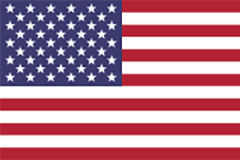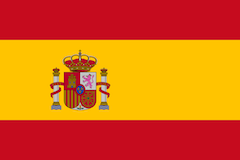During the colonial period, with the regulation of silver and gold by the Spanish government, artisans made keros mostly out of wood, which are often plainly engraved with geometric patterns. Keros with more baroque polychrome designs are typically inlaid and painted with lacquers and mineral- and plant-based colorants, such as cinnabar, orpiment, and cochineal. The Inca similarly used these colorants to dye textiles, and they also have been identified in the painted illustrations of colonial maps and codices. A white powdery pigment used to create new color palettes has been identified as a lead white, which initially was imported from Europe and only later produced locally. Cinnabar was mixed with white to create a sort of pink color for the figures’ skin.
Carved and inlaid designs include geometric patterns, zoomorphic and figural forms, floral elements, and symbols. Many cups can have multiple horizontal registers that organize the painted decorations into compositions of figural scenes and abstract motifs. They also organize figures hierarchically, which suggests ways these ceremonial vessels reflected social structures of the Inca. In the upper register of one Menil kero is a figural scene of musicians with differently painted faces flanking a harp. Although they wear variations of Spanish-like clothing, their headdresses are similar. Another example shows figures, possibly warriors, wearing distinct dress and holding different heraldic banners or shields. While the persons’ identities and the pictorial narratives on these examples are not known, both the paired figures evoke the sociopolitical function of keros and drinking chicha.
Hybrids of Inca and European imagery like these are distinctive of colonial keros and were often intended to look Inca without being too revealing of the Inca past in order to avoid references to paganism. Along with other objects, keros decorated with Inca iconography were confiscated by ecclesiastical and colonial authorities to suppress Indigenous religious practices and references to the past that might foment political uprisings. For example, Incan imagery played an important role in the large-scale revolt led by the cacique Tupac Amaru II (José Gabriel) in 1780. Keros made in workshops by native artisans in Spanish colonial cities therefore presented Inca iconography differently. They were typically decorated with flower and plant motifs, which were commonly found in paintings and frames from the period, and arguably appealed to Spanish tastes. Nevertheless, this imagery was powerfully symbolic of the Inca.
The qantu flower, for example, is regularly seen on keros; it was important to Inca ceremonies before and during the colonial period. Other motifs on colonial keros include carved human faces, jaguars, feathers, birds, vegetative forms, geometric shapes that resemble Inca pyramidal structures or staircases, and figures of people wearing capes and headdresses, such as images of noble persons engaged in some sort of ritual or dance rooted in the Inca past and cosmology. However, rather than being meaningful ceremonial and highly valuable gifts, they were promoted as merchandise or curious commodities in the colonial market.









